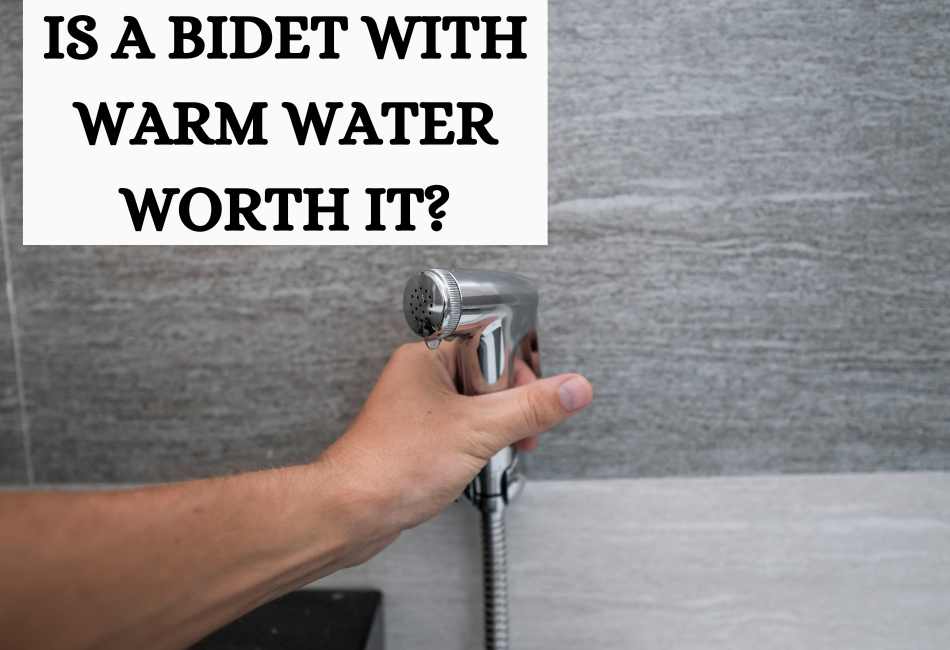Bidets, increasingly becoming a household name, are personal hygiene fixtures designed to wash and clean the genitalia, perineum, inner buttocks, and anus.
Originating from Europe, their popularity is largely thanks to their superior hygiene properties and the luxury of comfort they offer.
One feature that particularly elevates the bidet experience to another level is the inclusion of warm water.
This might seem like a minor detail for some, but once you’ve experienced the soothing warmth of water cleaning those intimate areas, there’s no going back.
In this article, we’ll delve into the benefits of having a bidet with warm water, discussing the main points of warmth, hygiene, and overall comfort. So buckle up and get ready for a warm ride in the world of bidets!
Warm Water in Bidets
In the realm of personal hygiene, comfort is king. The introduction of warm water in bidets plays a significant role in enhancing this comfort.
Remember the chill that runs down your spine when a splash of cold water hits your skin? Now, imagine that shock during your most intimate cleanup.
Not a pleasant thought, is it? This is where bidets with warm water enter the picture, turning a routine task into a soothing experience.
Many users swear by this feature – one even likened the sensation to a “warm hug on a winter morning.”
Unlike bidets offering only cold water, the difference is night and day, akin to stepping out of a chilly room into a warm, cozy bath.
The Role of Warmth in Relaxation
Diving deeper into the science of it, you’ll find that warmth is a catalyst for relaxation.
Heat encourages muscle relaxation, and in the context of bidets, a relaxed state significantly enhances the effectiveness of the cleaning process.
It’s not unlike taking a hot shower after a tense day; the warm water eases the tension in your muscles, rendering you a relaxed and clean state.
Benefits of Warm Water
Let’s talk cleanliness. Warm water in bidets isn’t just about comfort; it also contributes to better hygiene.
Research has shown warm water is typically more effective at eliminating bacteria and germs than cold water.
This is why many users believe that bidets with warm water provide a more thorough clean. One satisfied customer said, “It’s as if I’ve taken a mini shower – I feel that clean!”
Bidets with Cold Water – Limitations
Bidets that provide only cold water are not without their limitations. The initial shock of cold water can cause the body to clench involuntarily, which can impact the effectiveness of the cleaning process.
It’s akin to trying to clean a clenched fist instead of an open hand – the latter allows for a much more thorough clean, doesn’t it?
Many users prefer bidets with warm water, as the temperature encourages relaxation and, by extension, a more comprehensive cleanup.
Warm vs. Cold Water Bidets
In my quest to find the perfect bidet, I’ve delved into the world of both warm and cold water models. Let’s take a look at them from different perspectives:
Cost
Warm-water bidets are typically more expensive upfront than their cold-water counterparts.
However, the extra comfort the warm water provides can make it worth the additional cost.
As I always say, “Invest in comfort, reap a relaxing experience!”
Installation
Warm water bidets can be trickier to install as they typically need to be connected to the hot water supply.
I remember the first time I installed one – I was all thumbs and needed to call a plumber friend to guide me through the process.
On the other hand, cold water bidets are generally easier to install and do not require special plumbing.
Maintenance
Both require pretty much the same maintenance. However, my experience suggests that the warm water models require more attention due to their warm water mechanism.
The Eco-Friendly Perspective
Warm-water bidets do consume more energy than their cold-water counterparts, so there’s that. But then again, they reduce the use of toilet paper significantly, which is a win for the environment.
Energy Consumption
There’s no denying that heating water consumes energy. However, I’ve found ways to offset this –
I’ve been using solar panels to power my home, including the bidet. Cold water bidets, naturally, have a lower energy footprint.
Mitigating Environmental Concerns
Energy-efficient warm water bidets are available in the market for those with environmental concerns. And as I always say, using a bidet over toilet paper is a step in the right green direction!
Overcoming Common Concerns
One of the most common misconceptions about warm water bidets is that they’re overly complicated.
I’ve been there. When I first purchased my bidet, I was apprehensive about the seemingly complex settings. But trust me, once you’ve used it several times, the controls become second nature.
Energy Efficiency Solutions
Another concern often brought up is the energy consumption of warm water bidets. As I mentioned, I’ve been using solar panels to offset this, but I understand that’s not an option for everyone.
Fear not, there are energy-efficient models designed to minimize electricity use. And remember, every time you use a bidet, you save on toilet paper, which is a great move for the planet.
Maximizing the Benefits
To maximize the benefits of your warm water bidet, it’s all about personalization. Many models allow you to adjust the temperature and pressure settings to your preference, ensuring a comfortable experience every time.
Plus, there’s nothing like the feeling of stepping off a first-class flight in your bathroom.
Conclusion
To wrap up, the debate between warm water and cold water bidets is largely a matter of personal preference. I hope this article has provided some valuable insights to help guide your decision.
Warm water bidets offer unparalleled comfort and cleanliness, and they’re a fantastic eco-friendly choice, especially if you can offset energy consumption.
My journey with my bidet has been a discovery, and I am a confessed convert to the warm water camp.
I encourage you to weigh the benefits against your needs and make an informed choice. Remember, the ultimate aim is hygiene and comfort, and there’s no winner or loser in this – it’s about finding what works best for you.

